

400 cm x 400 cm
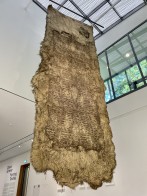

800 cm x 300 cm
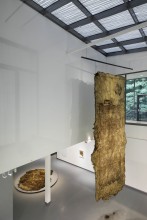

#3
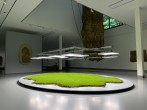

#4


#5
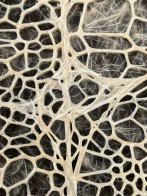

#6
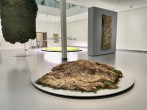

#7


600 cm x 400 cm
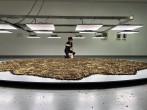

#9
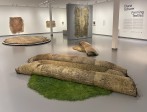

#10
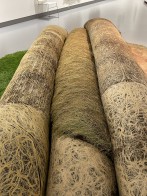

#11


#12
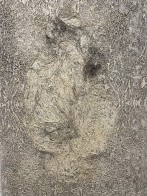

#13
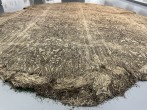

600 cm x 450 cm
1 Oct 2023 – 8 April 2024
In this solo exhibition, Farming Textiles, Diana Scherer reflects on humankind’s capacity and constraints in influencing nature while also highlighting the contemporary detachment between humans and the natural world. Farming Textiles showcases many recent works and features an installation of textiles ‘in the making’, allowing visitors to follow its growth process.
Curator Colin Huizing
Avro Tros Kunst Nu te zien!:
https://npo.nl/start/serie/nu-te-zien/seizoen-8/nu-te-zien_49/afspelen
https://www.kranenburgh.nl/tentoonstelling/129/diana-scherer-farming-textiles


#1


#2


#3
6. Biennale Reset Now! August 6 2023
Invited are 27 national and international contemporary artists who work at the interface of science, technology and art. Their works integrate complex themes and techniques such as AI, cybernetics, augmented reality and bio art. The exhibition “resetNOW!” presents itself as an experiment on aesthetics and technology. The aim is to show synergies and competences and to present a multifaceted picture of artistic discourse and production. In doing so, the relationship between science, art and society as well as the dissolution of boundaries will be addressed. The works of the artists invite the visitors to a parcours that condenses this theme kaleidoscopically.
Artists: Alexandra Bircken, Birthe Blauth, Tatjana Busch, Louisa Clement, Ursula Damm, Jana Debrodt, Nausikaa Hacker, Kelly Heaton, Alexandra Hendrikoff, Barbara Herold, Franka Hörnschemeyer, Notburga Karl, Brigitte Kowanz, Alicja Kwade, Julia Lohmann, Peggy Meinfelder, Anna Pasco Bolta, Nana Petzet, Anne Pfeifer, Sophia Pompéry, Rasha Ragab, Diana Scherer, Susanne Schütte-Steinig, Selma Selman, Catharina Szonn, Susanne Wiegner and Anne Wodtcke.
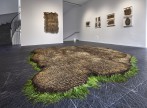

400 cm x 400 cm
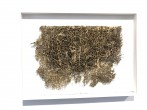

#2
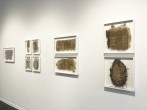

#3
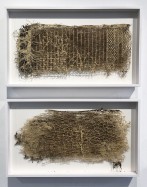

#4


#5
The Intelligence of Plants
16.10.2021 — 30.01.2022
With the exhibition The Intelligence of Plants, the Frankfurter Kunstverein wants to once again contribute to the debate about the Anthropocene: what new understanding of plant life have we humans gained, and what conclusions can we draw from this knowledge. If plants were the first living beings on the planet, they have proven to have developed successful methods to sustain themselves over millions of years despite the five past occurrences of species extinction.
Curator Franzisca Nori
Artists: Berlinde de Bruyckere, Diana Scherer, Nicola Toffolini a.o.
https://www.fkv.de/en/exhibition/die-intelligenz-der-pflanzen/.


#1


#2
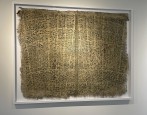

#3


#4
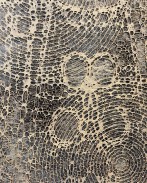

#5
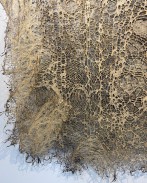

#6
Solo exhibition Wonderground
24 September 2022 -8 January 2023 Roof -A Rotterdam
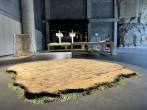

400 cm x 400 cm
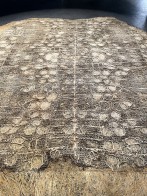

#2


#3


#4
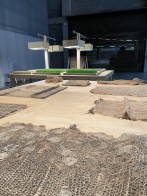

#5


#6
https://www.biennaleofsydney.art/
Entanglement, 2022 soil, seed, grass roots, timber
Commissioned by the Biennale of Sydney with generous support from the Goethe-Institut Australia and with generous assistance from Mondriaan Fund and the Embassy of the Kingdom of the Netherlands in Australia
In a laboratory-like set up, visitors are invited to see Diana Scherer at work as she undertakes what she refers to as “collaborations with nature” growing networks of roots into unique patterns of woven textile. Known by neurobiologists as the brain of plants, Scherer draws attention to roots as active intelligent agents in the process of producing living fabrics.
Scherer is particularly fascinated by the hidden systems of plants. Her project Entanglement looks at xylem vessels, the tissue responsible for transportation of water through plants. Examining closely the interdependence of plants and water, the pattern Scherer creates with the roots is inspired by the forms of the xylem vessels in plant anatomy. The emergence of these water vessels in plants is considered one of the most important evolutions in the life of plants. Taking geometric and ordering principles and patterns from nature, Scherer poses a dilemma as her craft is both a manipulation of natural processes and possible cultivation of a joint path together.
“A root navigates, knows what is up and down, perceives gravity and can locate moisture and chemicals. Roots are incredibly strong. In their search for food and space they fight for every space they can find. I use this strength to create my work. I expose the subterranean life and natural network turns into a textile-like material. The dynamism of the plant makes it seem as if the work is making itself.
I have learned to deal with the autonomy of nature. Despite my intervention, the outcome is unpredictable every time. The interaction of control and letting go is an important element in my work.” – Diana Scherer
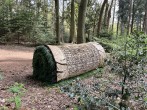

200 cm x 150 cm


#2
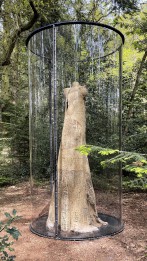

#3
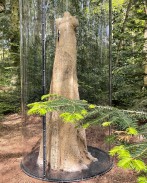

#4
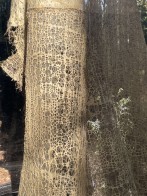

#5


#6


#7


#8
Harvest Recasted 2022
Curator Hans Den Hartog Jager
The exhibition consists of new work by Marianna Simnett, Charles Avery, Mercedes Azpilicueta, Diana Scherer, Erik van Lieshout, Augustas Serapinas, Isa van Lier, Jakob Kudsk Steensen, Kasper Bosmans, Renzo Martens / CATPC, Alexandra Pirici and Em’kal Eyongakpa.
Design and production vitrines: Shahin Emamgholizadeh
https://arcadia.frl/en/projecten/paradys/?cn-reloaded=1
Installation Harvest Recasted 2022
For the Triennial Paradys Arcadia in Oranjewoud 2022, Scherer grew three long dresses 300 cm high. The dresses refer to three noble women who each left their own mark on the history of the Oranjewoud estate. Like ghosts sprouting from the ground, the dresses rose up in their protective display cases: one for the estate’s founder Albertine Agnes van Nassau (1634-1694), one for her daughter-in-law Henriette Amalia van Anhalt-Dessau (1666-1726) and one for Maria Louise van Hessen-Kassel (1688-1765).
The three women act as characters through which Scherer made visible the different historical layers and characters of Oranjewoud. In the patterns Scherer used, themes appropriate to their roles can be recognised. The dresses were displayed in three round showcases in the middle of the Oranjewoud forest. She also placed three sculptural grass rolls with root patterns in the forest. The grass roll is a reference to the farmers who were driven out of here centuries ago to make way for Albertine Agnes’ estate. But the roll also refers to a roll of fabric, as sold by the yard, ready to be cut for a new dress.
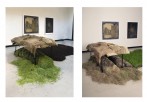

#1


#2
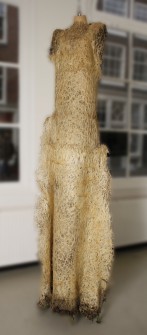

#3
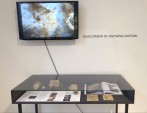

Material Research


Material experiment TU Deft
Hyper Rhizome
Solo Show – Droog Gallery Amsterdam – 6 January 2020 – 30 March 2020
With Hyper Rhizome, Diana Scherer presents a selection of works from plantrootweaving, alongside scientific research and growing objects. Through her installations, photographs and botany Scherer examines the boundaries between plant culture and plant nature. What does “natural” mean in the Anthropocene and is man not also nature or a parasitic species on the rest of his environment? In order to realize her ideas she collaborates with biologists, engineers from TU Delft and Radboud University Nijmegen. Scherer applies the intelligence of plants in her work and makes the hidden world visible. With Exercises in Rootsystem Domestication the natural network of the roots turns into an artificial textile. She approaches the root system as if it were yarn and analyze the various appearances. For example, the refined, white root structure of grass reminds her of silk and the powerful, yellowish strands of the daisy she compares to wool. Scherer combines her interest in plant science with textile craft. She brings together her research in weaving techniques with the strength of nature.
The patterns Scherer applies in her work reflect her interest in hybrid forms. She combines the geometric and ordering principles of nature with basic man-made patterns from her surroundings such as a doormat or bubble wrap. The construction and ordering principles of nature is the theory that assumes that the same elements and patterns keep coming back in every plant and consist of a geometric order.
The exhibition is kindly supported by BankGiro Loterij Fonds, Mondriaan Fonds, Fonds Kwadraat, Radboud University Nijmegen, TU Delft
https://www.tracymetz.nl/2020/02/05/diana-scherers-kunstwerken-van-levend-textiel/


#1


#2
The National Library of Letland / Riga 8.10. – 20. 11. 2020
Curators Yvonne Volkart, Rasa Smite, Raitis Smits.
ECODATA aim is to explore the ‘ecosystematic perspective’. More than just rising awareness that living organisms are highly interdependent on each other and their environments, this year’s festival edition aims to reveal a web of connections that interweaves biological, social and techno-scientific systems, living and digital data, artistic and scientific approaches. ECODATA exhibition is the central axis of the festival, which forms the rest of the program, made in collaboration with Ecodata–Ecomedia–Ecoaesthetics” research group led by researcher and theorist Yvonne VOLKART, (Basel, Switzerland). The purpose of this exhibition is to bridge the gap between technological and ecological as well as to incorporate technological issues into ecological art. This year’s exhibition will feature twenty artworks by internationally acknowledged artists working in the field of media art, science and ecology.
